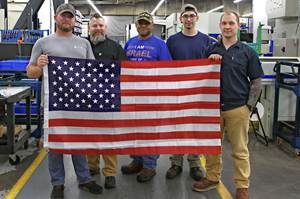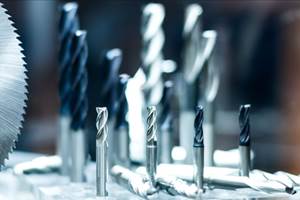Proving The CNC Job
I thought that program was proven! Many manufacturing people, especially upper management, feel that if a program has been verified and has been used to successfully complete one production run, there should be no problems when running the job in the future. In reality, any number of things could be different the next time a job is run.
Share




I thought that program was proven!
Many manufacturing people, especially upper management, feel that if a program has been verified and has been used to successfully complete one production run, there should be no problems when running the job in the future.
In reality, any number of things could be different the next time a job is run. At the very least, this leads to duplicated effort as the job is re-run. Worse, the setup person may have problems to overcome each time the job is run, leading to wasted time. This can be very frustrating. In many companies I’ve visited, CNC people feel like they are chasing their tails when re-running jobs.
Even coming up with a good definition of a proven job can be difficult. Is it a job that has been run once before? Is it a job that has been run successfully three times? Is it a job that all setup people and operators have had to run at least once?
The challenge is eliminating all of the potential differences from the first time a job is run to all future times the job is run. If nothing changes from one time to the next, the tasks related to setup and running production can be repeated. So, our definition is this: “A proven job is one that can be run repeatedly without modification to the program, setup or the way production is run.”
Until you eliminate all modifications from one time a job is run to the next, you can’t consider a job truly proven. And again, this usually involves a substantial effort—one that begins with the question, “What has changed from the last time we ran the job?”
Think about inconsistencies that cause problems as people struggle to repeat jobs. In many cases, these will be related to inadequate documentation, the skill of the people involved, and/or a lack of communication. What has changed is related to a misunderstanding among the people involved.
As an example, say the setup instructions for a given machining center are rather vague. Clamp positions are not specified. Doing his best, the setup person places a clamp in a location that will interfere with the tool motions of the program. At the very least, this will result in wasted time as the program or setup is changed. This inconsistency can be avoided with adequate documentation.
Other inconsistencies are unrelated to documentation and skill level of the people involved. If, for example, the location surfaces of a multi-workpiece fixture have worn over time, the setup person may have to alter the program every time the job is run. Like any perishable tool, fixtures must be replaced or serviced.
Some inconsistencies are even more severe. Say, for example, you find that the speeds and feeds for tools in a job must be changed every time the job is run, even though your cutting tools remain the same. In this case the hardness of the raw material is what’s changing. The long-term solution would be to place more emphasis on purchasing consistant material.
As CNC people, we can find ourselves with problems beyond our control. The company may be acquiring material from several suppliers, based on which one is offering the lowest price. Buyers must understand if inconsistencies in the workpiece material waste time and money when jobs are run, the company hasn’t really saved money by using the cheaper material. Given the high costs related to lost time, the company may lose money.
Related Content
Finding Skilled Labor Through Partnerships and Benefits
To combat the skilled labor shortage, this Top Shops honoree turned to partnerships and unique benefits to attract talented workers.
Read MoreThe Power of Practical Demonstrations and Projects
Practical work has served Bridgerland Technical College both in preparing its current students for manufacturing jobs and in appealing to new generations of potential machinists.
Read MoreManufacturing Madness: Colleges Vie for Machining Title (Includes Video)
The first annual SEC Machining Competition highlighted students studying for careers in machining, as well as the need to rebuild a domestic manufacturing workforce.
Read MoreAddressing the Manufacturing Labor Shortage Needs to Start Here
Student-run businesses focused on technical training for the trades are taking root across the U.S. Can we — should we — leverage their regional successes into a nationwide platform?
Read MoreRead Next
Building Out a Foundation for Student Machinists
Autodesk and Haas have teamed up to produce an introductory course for students that covers the basics of CAD, CAM and CNC while providing them with a portfolio part.
Read MoreRegistration Now Open for the Precision Machining Technology Show (PMTS) 2025
The precision machining industry’s premier event returns to Cleveland, OH, April 1-3.
Read MoreSetting Up the Building Blocks for a Digital Factory
Woodward Inc. spent over a year developing an API to connect machines to its digital factory. Caron Engineering’s MiConnect has cut most of this process while also granting the shop greater access to machine information.
Read More
.jpg;width=70;height=70;mode=crop)































